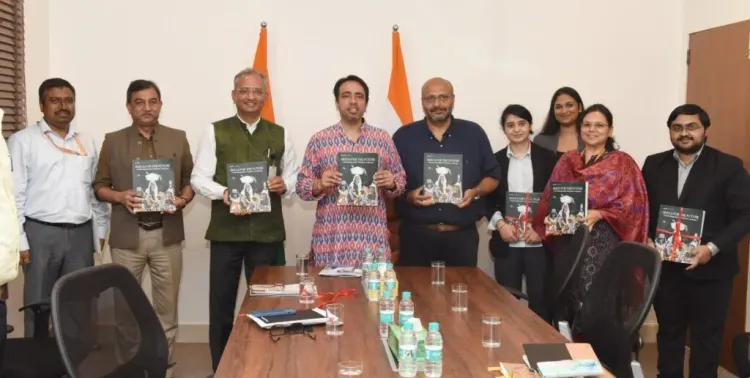How Can India Boost Its Skill Landscape by Recognising Informal and Experiential Learning?

Synopsis
Key Takeaways
- Informal Learning is essential for bridging skill gaps.
- A robust Employability Index can track education impacts.
- The report identifies key sectors for vocational training.
- Data-driven reforms are crucial for effective policy-making.
- Adapting to market needs is vital for workforce resilience.
New Delhi, June 26 (NationPress) The skills landscape in India is primarily influenced by demand and market dynamics, according to Jayant Chaudhary, the Minister of State for Education. He emphasized the importance of acknowledging informal and experiential learning.
During the launch of a report titled “Skills for the Future: Transforming India’s Workforce Landscape,” prepared by the Institute for Competitiveness, Chaudhary highlighted that the skill landscape should cater to the changing requirements of both industry and workforce.
This report, leveraging public domain data, offers a thorough analysis of India's skills landscape, focusing on factors such as educational attainment, occupational distribution, and the acquisition of technical and vocational education and training (TVET).
“Skilling should not simply be viewed as a supply-side intervention; it must be a demand-driven, market-aligned, and outcome-oriented ecosystem that meets the evolving needs of industry and workforce. We must strengthen connections between education, vocational training, and industry, which includes acknowledging informal and experiential learning,” Chaudhary stated.
He also proposed that a comprehensive employability index would be beneficial in assessing the impact of education and skilling on youth employment prospects in the changing economic and technological landscape.
Atul Kumar Tiwari, Secretary of MSDE, remarked that skilling is an important area for academic research.
He also highlighted the necessity of creating a body of literature around skilling backed by data and evidence, and called for a deeper exploration of structural adjustments relating to skilling, education, and the work continuum.
In the meantime, the report evaluated India's skills landscape within the context of the emerging knowledge-driven global economy.
Data from the Periodic Labour Force Survey (PLFS) indicates that in 2023-24, approximately 88% of India’s workforce is engaged in low-competency occupations, while merely 10-12% occupy high-competency roles.
Moreover, utilizing PLFS (2023-24) data, the report identified five sectors -- IT and ITeS, textile and apparel, electronics, healthcare and life sciences, and beauty and wellness -- which collectively represent over 66% of vocational training in India.
The report advocates for multifaceted and targeted interventions to cultivate a resilient and future-ready workforce.
It calls for a dedicated and standardized data collection system to generate estimates regarding skill requirements, thereby enabling targeted evidence-based reforms and policies.









